A simple hitch knot that creates a self-tightening loop at the end of the rope. It’s most commonly used in sailing for attaching a halyard to a shackle.
The Halyard Hitch has other names as well, like the Halyard Shackle Knot or Sunfish Halyard Knot.
Quick Guide: How to Tie the Halyard Hitch Knot
To tie the Halyard Hitch, pass the working end through the shackle, wrap it around the standing end two times, and pass the working end through both of these loops.
There are two variations on how to tie the Halyard Hitch Knot. In this guide, we’re showing the one where the working end comes out right next to the standing end.
But you can also tie it similarly to the Stevedore Stopper knot. This way, the working end comes out at the upper side. Both of these variants are similar in strength, but the variant we’re showing is less likely to come undone.
This knot is usually used for semi-permanent situations, so the end is trimmed short and heat-sealed. But if you’re using it for critical loads, make sure to keep the end long to account for slippage.
If you want to improve the strength of the Halyard Hitch, you can wrap it around the standing end three or more times, instead of only two turns.
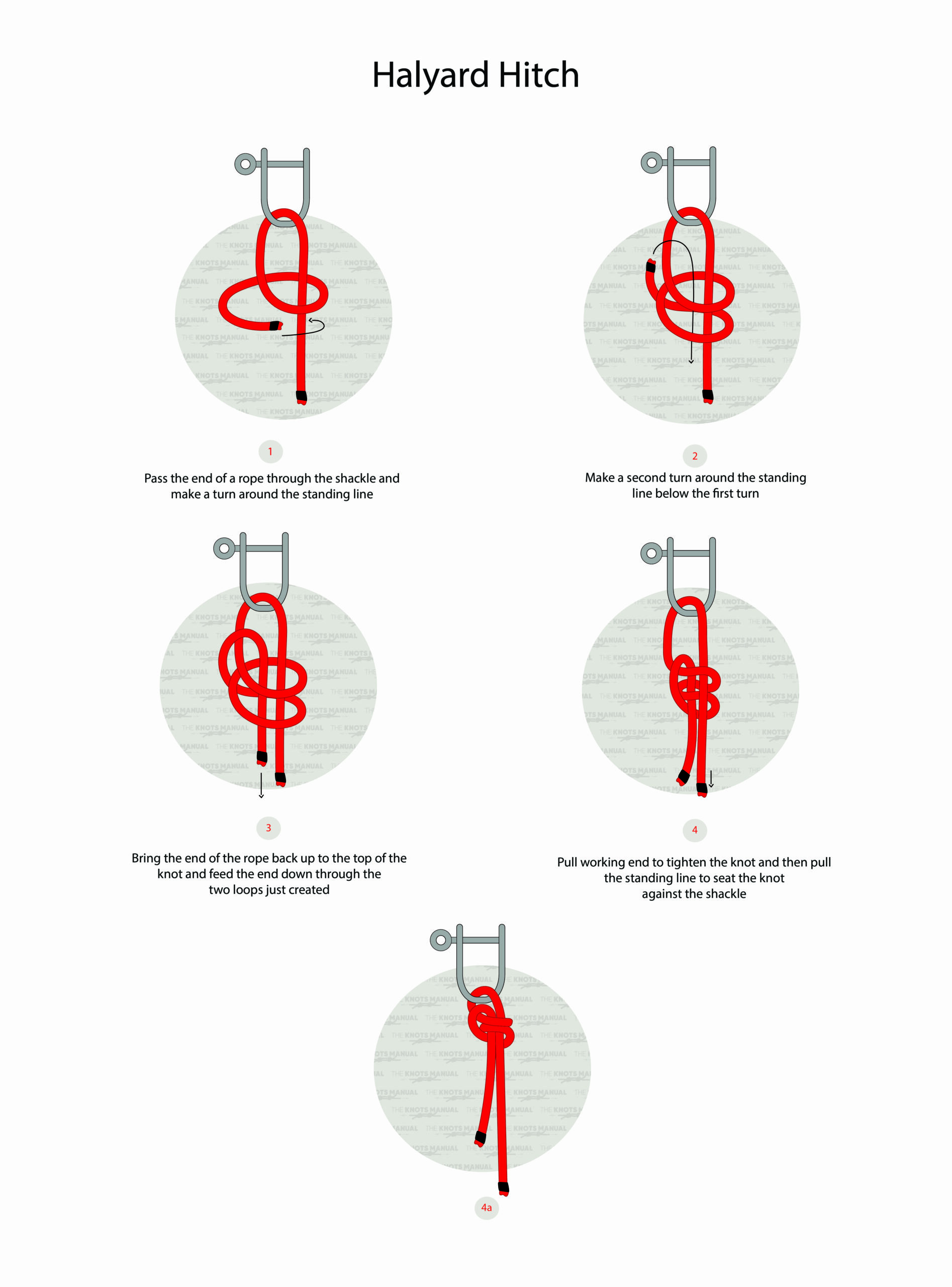
Pros and Cons of the Halyard Hitch
The Halyard Hitch is very easy to tie and to teach to beginner knot-makers. It’s also very easy to check – it should form two parallel strands and one perpendicular on one side.
The Halyard Hitch also has a slim and compact profile. This makes it ideal for permanently connecting a rope to a shackle or a carabiner, as it’s unlikely to catch against other objects.
It’s also a strong and reliable knot, which is unlikely to come undone, even with cyclical loads. That said, it usually isn’t used for critical applications, like climbing.
The main downside of the Halyard Hitch is that it’s hard to untie once it’s been loaded with weight. The rope is often cut off rather than trying to untie the knot.
It isn’t effective with large-diameter objects. In this case, the fixed loop doesn’t tighten fully and the knot is less secure.
The Halyard Hitch is also very difficult to tie and untie under load or with one hand.
Common Uses for the Halyard Hitch
Most commonly, the Halyard hitch is used in sailing. It’s used with the Halyard rope for hoisting a ladder, flag, sail, or yard. It can be used to tie around the anchor object. But most commonly it’s attached to a shackle, carabiner, or ring to make it easy to disconnect if needed.
It’s usually used in permanent situations, like attaching a halyard rope to the sail, because it’s very difficult to untie. This knot also doesn’t loosen over time – the rope is more likely to wear down faster than the knot.
Typically, the end of the rope is cut short and heat-sealed, which acts similarly to a stopper knot. This means that it can’t be used with all types of rope materials, which are resistant to fire. With these ropes, you shouldn’t use this knot for critical applications.
The Halyard Hitch is also very commonly used as a flagpole knot due to its reliability and slim profile. You can tie two opposite Halyard Hitches to one another to turn it into a bend knot.
It’s also commonly used by firefighters and in search and rescue. It’s used for securing a ladder, but in this case, the other variation of the Halyard Hitch is used.
Knots Like the Halyard Hitch
Buntline Hitch: This knot can be used in similar applications to the Halyard Hitch. It’s similarly secure and has a slimmer profile. But it’s harder to tighten and more difficult to untie.
Bowline Knot: Some sailors use the Bowline Knot instead of the Halyard Hitch. It’s less secure, more commonly known, and much easier to untie.
Poacher’s Knot (Double Overhand Noose): The Poacher’s knot is tied very similarly to the Halyard Hitch, except the turns are tied in opposite directions. This makes the adjustable loop easier to tighten as you pull it. It’s also a bit less secure but easier to untie.
Flagpole Knot (Halyard Bend): In this variation, two Halyard Hitches are tied opposite to one another to connect two ropes. As you pull this knot, it tightens. It’s used as a flagpole knot because it has a very slim profile and doesn’t come undone under cyclical loads.
Anchor Hitch Knot: This hitch is also very commonly used in boating but to permanently connect to an anchor. It’s a very strong knot that is unlikely to come undone.
Two Half-Hitches: This is one of the simplest hitches, created by tieing two overhand knots in a row. It’s a secure hitch, but difficult to untie. It’s usually used for mooring boats.
Illustrated Guide: How to Tie the Halyard Hitch Knot
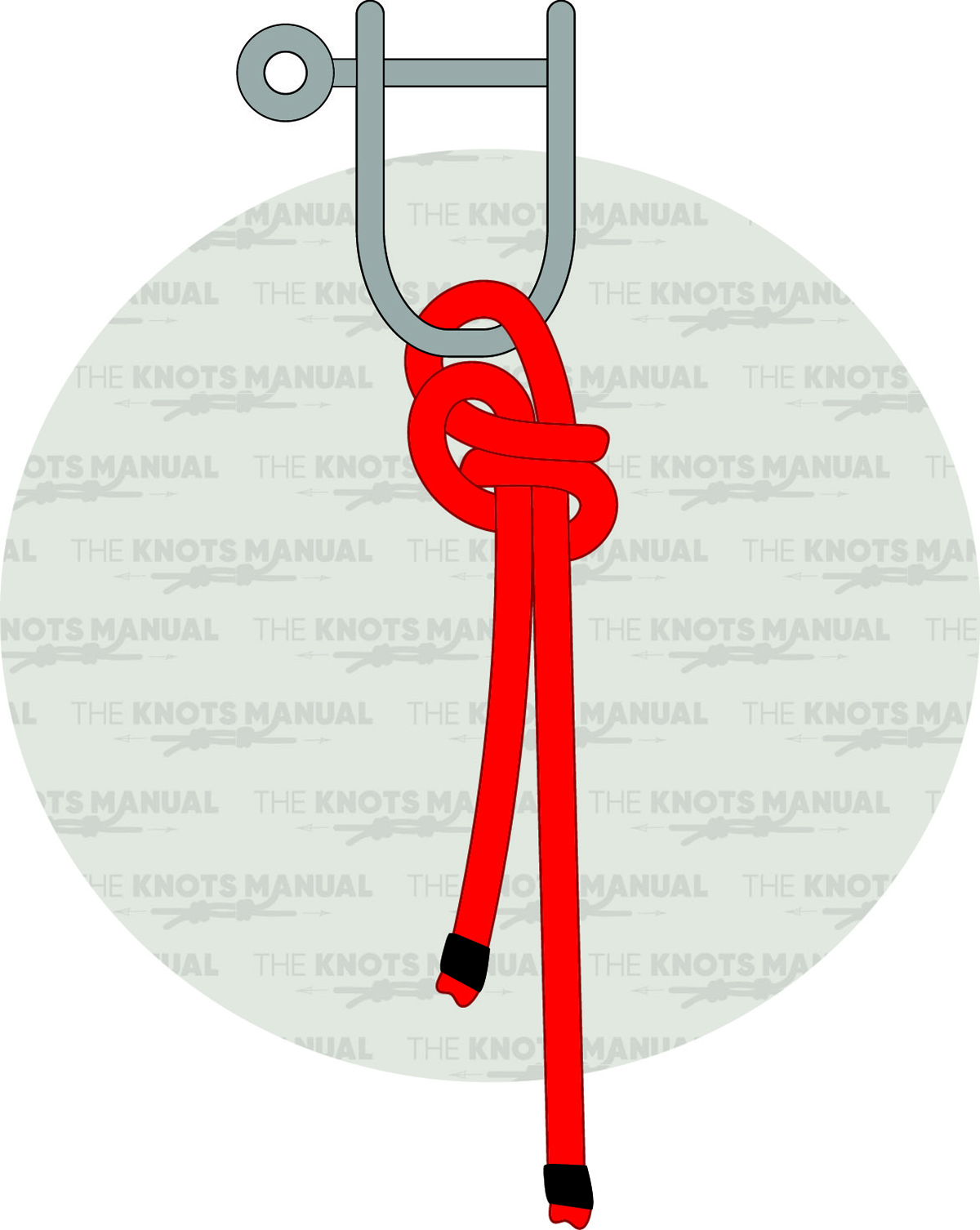
A step-by-step illustrated guide on how to tie a Halyard Hitch Knot.
Step 1:
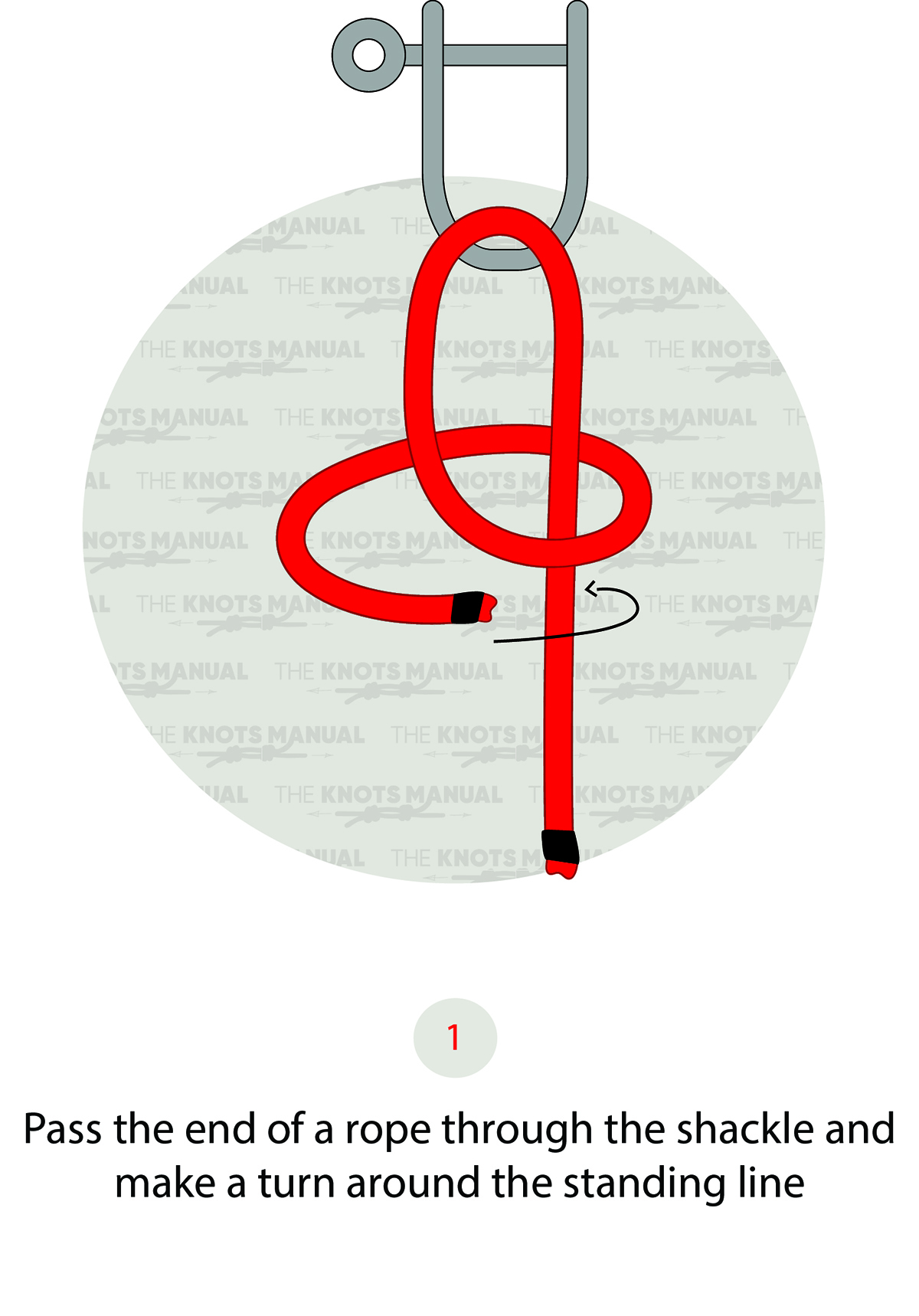
Wrap the working end of the rope through an anchor and then wrap it around the standing end.
Step 2:
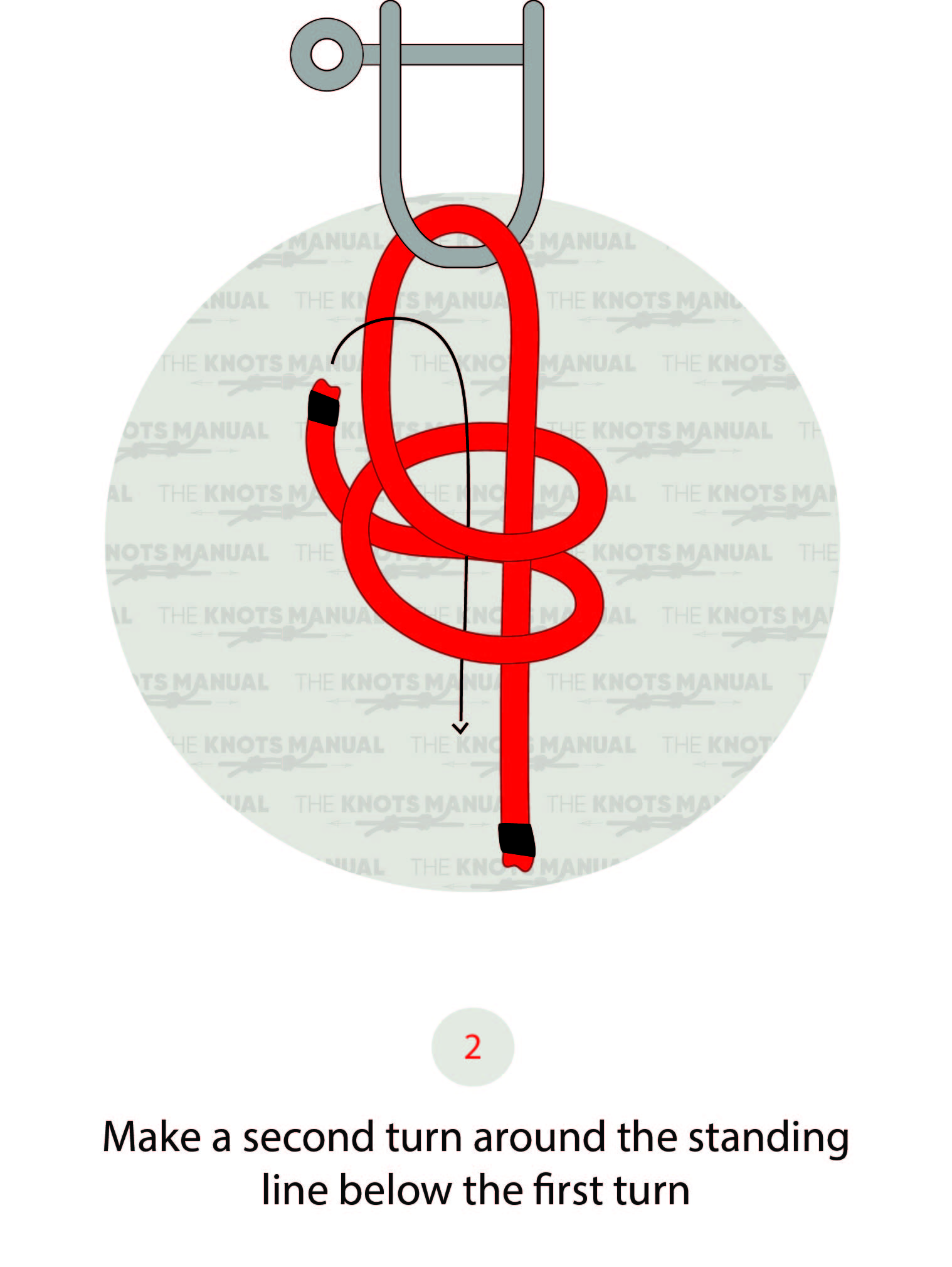
Wrap it around one more time and then pass the working end through both loops.
Step 3:
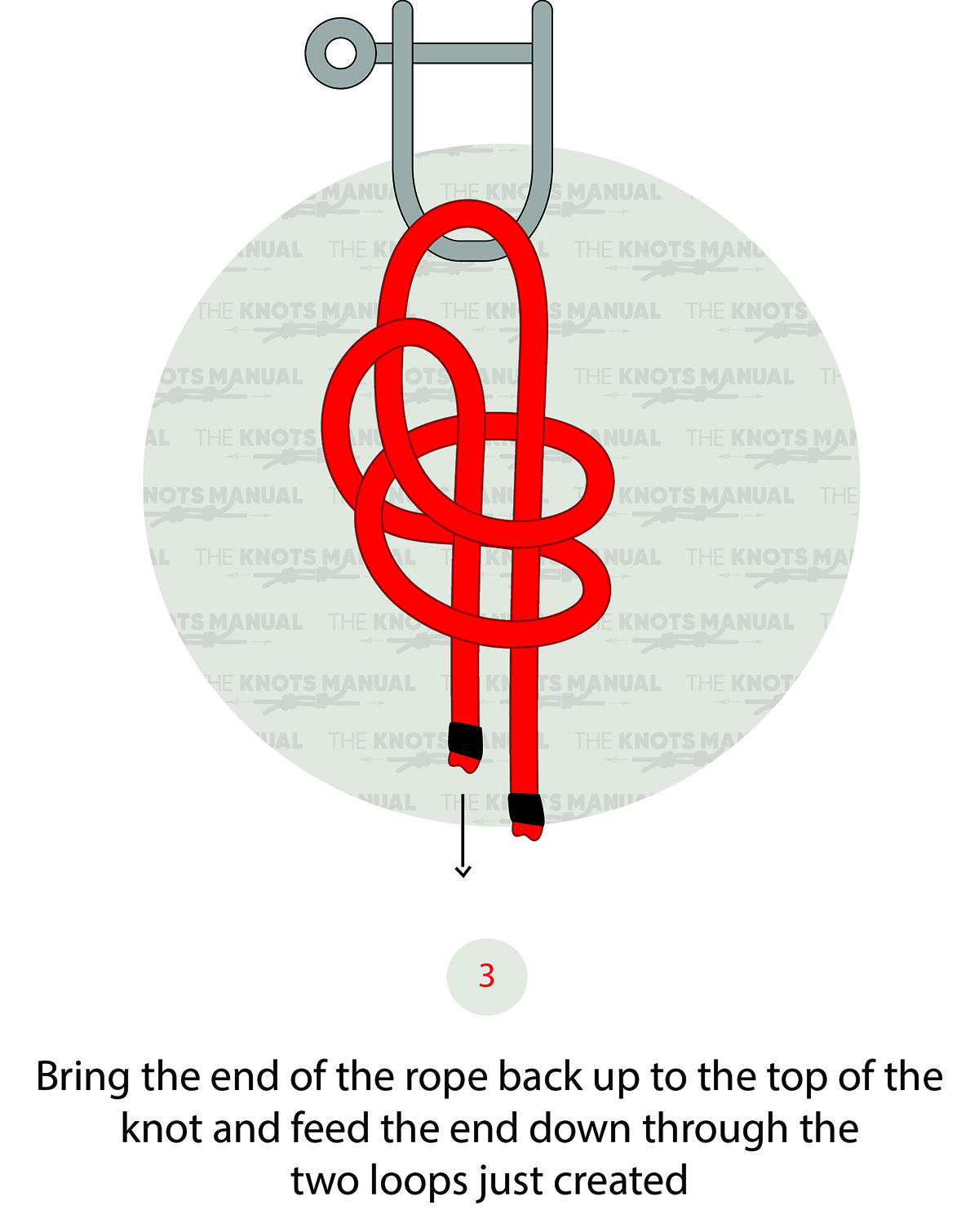
The working end should come out next to the standing end.
Step 4:
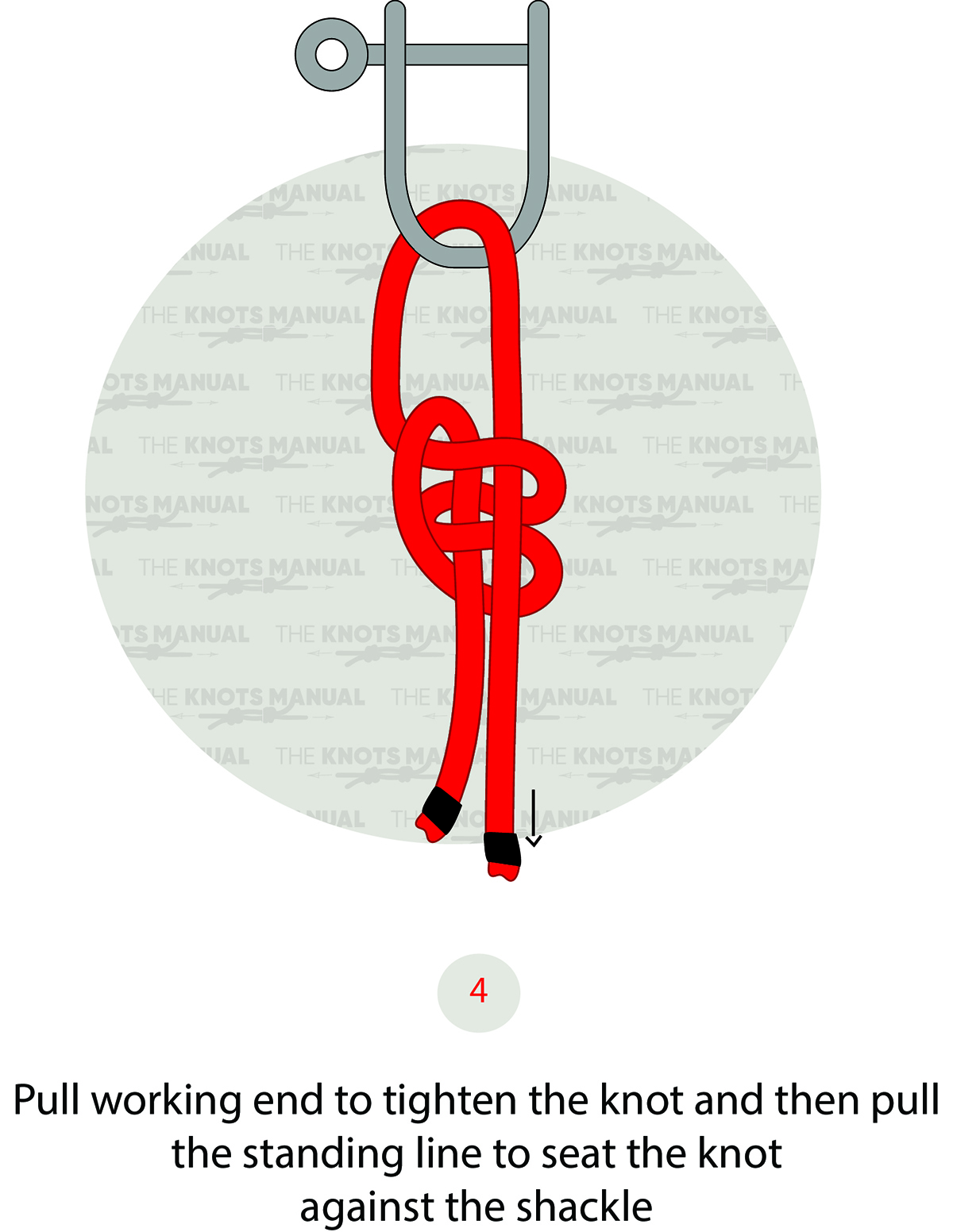
Tighten the knot by pulling the working and standing ends.
Step 4a:
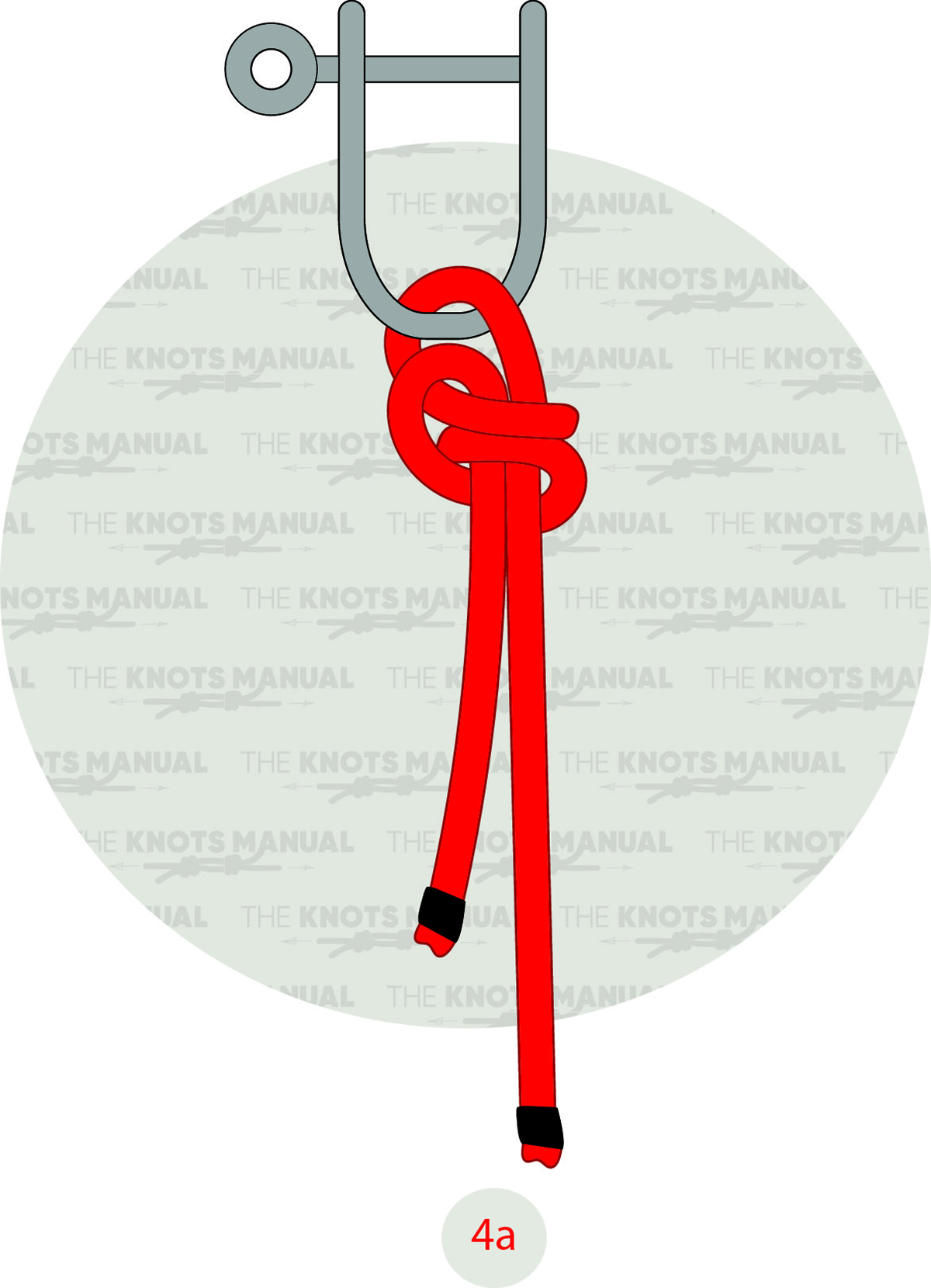
The finished knot should be right next to the anchor.
Frequently Asked Questions
Is the Halyard Knot Better Than a Bowline?
The Halyard Knot is stronger than a Bowline Knot and also less likely to come undone. It’s even secure with cyclical loads. Its main disadvantage over the Bowline Knot is that it’s much more difficult to untie. That’s why it’s more commonly used for permanent applications. as opposed to the bowline.
Can the Halyard Knot Come Undone?
The Halyard Knot is very unlikely to come undone, especially if it’s been heat-sealed. It can only come undone when tied around larger-diameter objects instead of small poles, anchors, and shackles. In this situation, you can tie another stopper knot right after the Halyard Hitch, like the Double Overhand Stopper Knot.
Is the Halyard Knot Better Than a Splice?
A splice will always be more secure than a Halyard Knot. It creates a permanent knot, unlike the Halyard Knot which can be untied with difficulty. But for boating purposes, a Halyard Knot is more than secure enough to use on the Halyard rope.
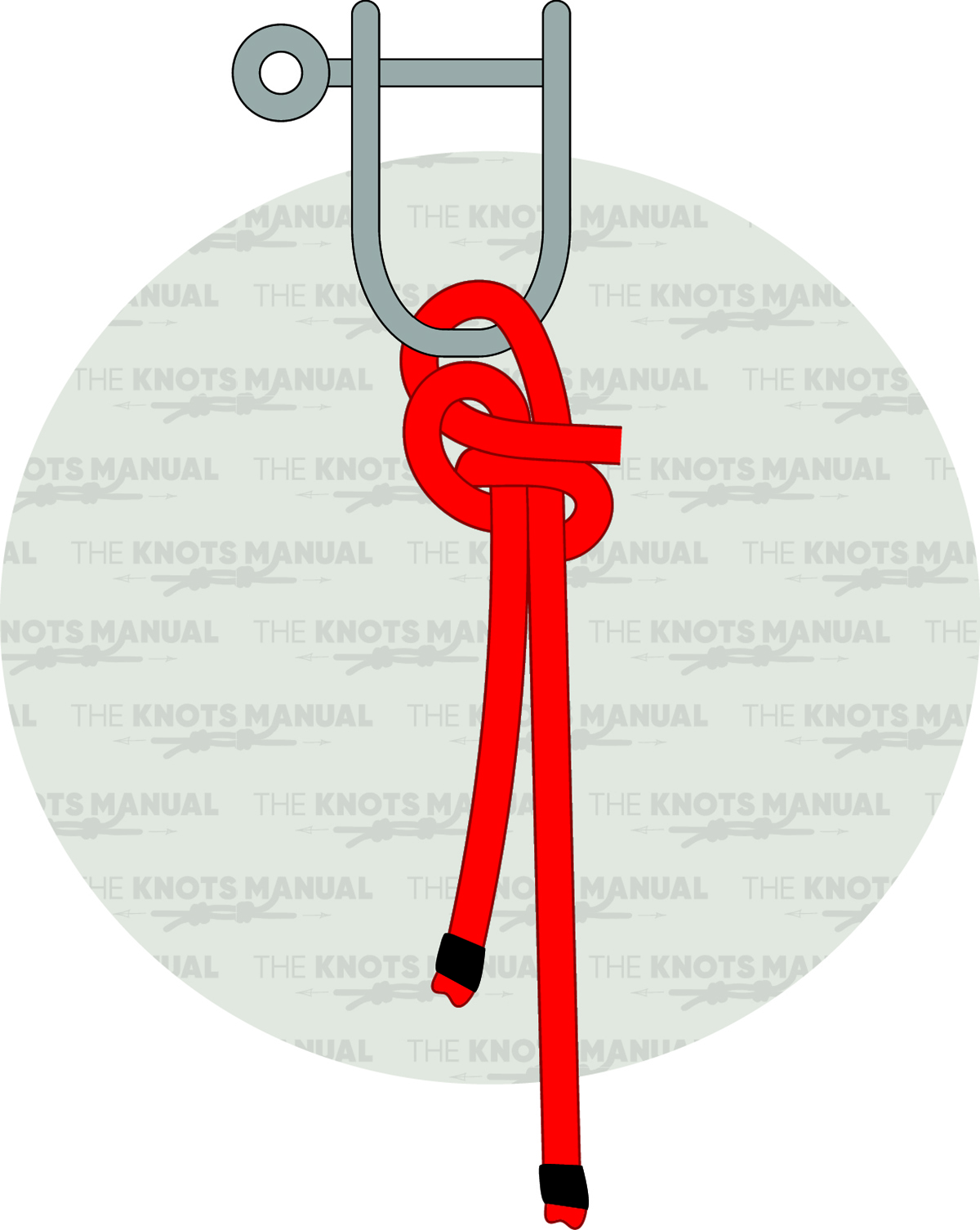





I think diagram 4 should show the standing part going through both loops, instead of only one. It looks like the bottom loop should have been shown over the standing part.